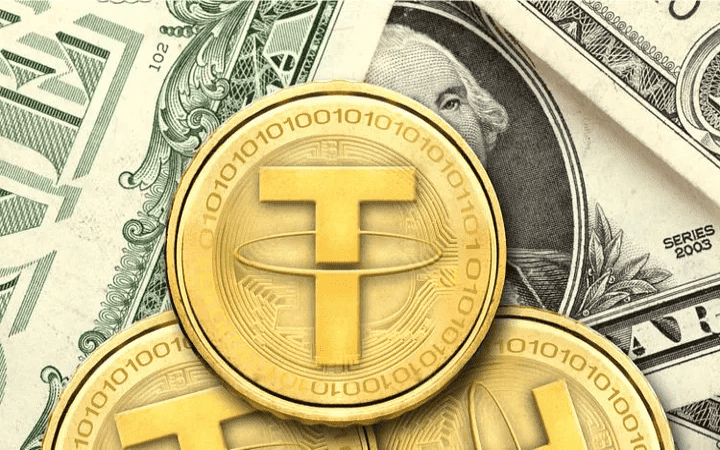BLOG


10 Major Cryptocurrencies Beyond Bitcoin
Bitcoin isn’t just responsible for starting a trend that has resulted in a wave of Cryptocurrencies built on decentralized peer-to-peer networks, but it has also become the de facto standard for Cryptocurrencies, which has resulted in an increasing regiment of supporters as well as sequels. Bitcoin was created by Satoshi Nakamoto, a programmer from Japan. As Bitcoin is not the only Cryptocurrency on the market, it is important to investigate other Cryptocurrencies and determine which ones, in addition to Bitcoin, have been performing well.
Following are the 10 major Cryptocurrencies beyond Bitcoin that you should know if you haven’t heard other than this Crypto:
1. Ethereum (ETH)
Following Bitcoin’s lead, Ethereum’s reputation has skyrocketed over the last several years, making it one of the most well-known Cryptocurrencies. By market capitalization, it is the second biggest digital currency, behind only Bitcoin. Ethereum’s mission is to provide a suite of decentralized financial services accessible around the clock, anywhere in the globe. Being a decentralized technology platform, it facilitates the creation and execution of smart contracts and DApps with almost no possibility of deception or third-party interference.
2. Tether (USDT)
Tether (USDT) is among the earliest and also most widely used stablecoins, or digital currencies that attempt to stabilize its value by being pegged to a fiat currency or another exterior benchmark. Even even the most widely used digital currencies, like Bitcoin, have times of extreme turbulence. Stablecoins like Tether are designed to draw consumers who might be wary of other Cryptocurrencies because of their tendency to see wild price swings.
3. Bitcoin Cash (BCH)
Hard forks, or dramatic changes to a network’s protocol, like the one that created Bitcoin Cash after months of debate between miners as well as designers, are ultimately responsible for their creation. The autonomous character of Cryptocurrencies means that the underlying code for their procedures couldn’t be modified at will but rather requires widespread consent. A divide happens when an additional network is generated with the updated code but the previous chain continues to function if not enough individuals approve the modification.
4. USD Coin (USDC)
The value of USD Coin, like that of other stablecoins, is pegged to the value of the US dollar via the use of fiat-collateralized reserves, which implies that the quantity of USD Coin in existence is backed by a similar amount of fiat cash. The Centre Consortium, which includes Circle as well as Coinbase, released USD Coin in 2018. As Circle is headquartered in the United States, it is governed by federal law, making USDC a controlled stablecoin.
5. Binance Coin (BNB)
As a utility token used to settle transaction costs on the Binance Exchange, Binance Coin (BNB) is a key component of the Binance ecosystem. By market valuation, it ranks as the third biggest Cryptocurrency. Coin holders get a rebate when making purchases on the exchange. Binance’s decentralized exchange runs on the same blockchain as Binance Coin. According to trading volume, Changpeng Zhao’s Binance Exchange is one of the most popular in the globe.
6. Cardano (ADA)
Cardano is distinguished from Bitcoin in part because it uses a Proof of Stake method rather than a Proof of Work method. For want of a better term, this implies that a security mechanism is in place that, like Bitcoin’s, seeks to promote sustainable and ethical development while having negligible ill effects on the ecosystem. Cardano’s high supply of 45 billion ADA, which is still a constraint but would require some time to be called ‘in demand’ despite its popularity or may be the reason why it lags so far behind Bitcoin and also many other Cryptocurrencies.
7. Binance USD (BUSD)
Binance , a Cryptocurrency exchange, launched USD, a stablecoin backed by the U.S. dollar, in 2018. This stablecoin is regulated in the same way as fiat currencies since it was sanctioned by the New York State Department of Financial Services.
8. Stellar (XLM)
Stellar’s main goal is to serve as a blockchain that can facilitate very massive transactions, such as those amongst investment companies and banks, setting it apart from many other Cryptos. XLM has made this kind of Crypto transaction very fast, previously it may take days or weeks to execute, with eye-popping costs.
9. Ripple (XRP)
With the launch of the XRP Ledger in 2012, Ripple introduced a new payment mechanism that uses XRP as its native coin. Neither PoW nor PoS are used in the XRP Ledger’s XRP Ledger Consensus Protocol, which is used for agreement as well as verification. Rather, clients sign as well as transmit activities towards the distributed ledger administrators.
10. Litecoin (LTC)
Litecoin was developed by Charlie Lee, a former Google engineer and MIT alum, and is one of the first Cryptocurrencies to follow Bitcoin. This is based on a public, permissionless blockchain. Compared to Bitcoin, Litecoin transactions may be completed in a fraction of the time and the currency supply is almost four times as big, at about 84 million tokens.
